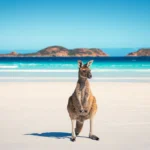Introduction:
New Zealand, officially known as Aotearoa in Maori, is an island country located in the southwestern Pacific Ocean. It comprises two main landmasses, the North Island and the South Island, along with over 700 smaller islands. The capital city is Wellington, while Auckland is the largest city.
New Zealand’s geography includes a wide range of landscapes, from rolling hills and expansive plains to majestic mountains and beautiful coastlines. The country is known for its unique biodiversity, including numerous endemic species of birds, plants, and animals. The climate ranges from subtropical in the north to temperate in the south.
Economically, New Zealand is a developed country with a market economy dominated by the services sector, followed by industry and agriculture. It is known for its dairy products, meat, wine, and wool. The New Zealand dollar (NZD) is the official currency, and the country has a high standard of living.
Culturally, New Zealand is a blend of Maori, European, Pacific Island, and Asian influences. The Maori culture is an integral part of New Zealand’s identity, with traditions, language, and customs that are celebrated and preserved. English and Maori are the official languages.
New Zealand’s history dates back to the 13th century when Polynesians settled the islands and developed the distinct Maori culture. European exploration began in the 17th century, and British colonization started in the 19th century. New Zealand gained full sovereignty in 1947.
Politically, New Zealand is a parliamentary representative democratic republic. The British monarch is the head of state, represented by the Governor-General, while the Prime Minister is the head of government. New Zealand is known for its stable political environment and progressive social policies.
Tourism in New Zealand is a major industry, with millions of visitors drawn to its natural beauty, outdoor activities, and vibrant cities. Popular attractions include the fjords of Milford Sound, the geothermal wonders of Rotorua, and the stunning landscapes featured in the “Lord of the Rings” films.
110 Facts About New Zealand (2024)
Basic Information
| Number | Category | Details |
|---|---|---|
| 1. | Current Name | New Zealand |
| 2. | National Name | Aotearoa (Maori) |
| 3. | Former Names | N/A |
| 4. | Date of Establishment | September 26, 1907 (Dominion status) |
| 5. | Date of Independence | November 25, 1947 (from the UK) |
| 6. | Leadership | Prime Minister: Chris Hipkins |
| 7. | Government Type | Parliamentary representative democratic republic |
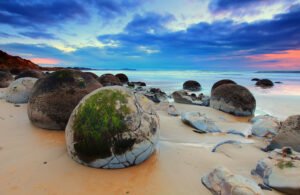
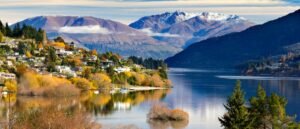
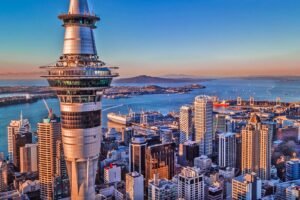
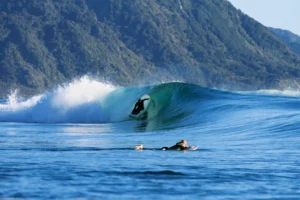
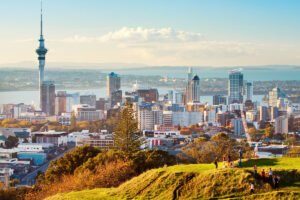
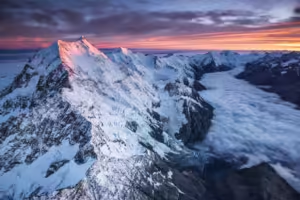
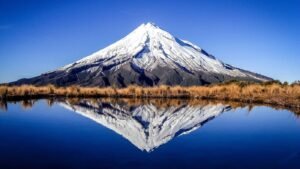
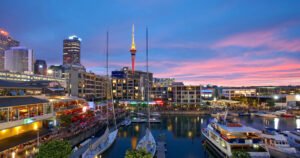
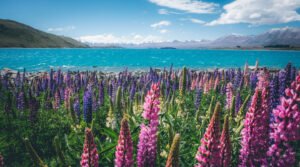
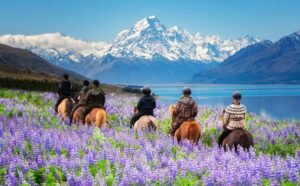
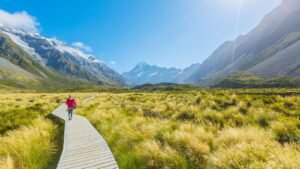
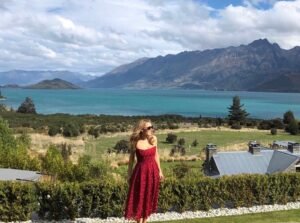
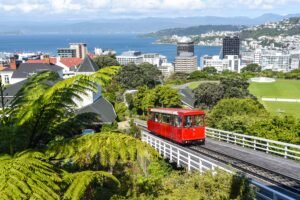
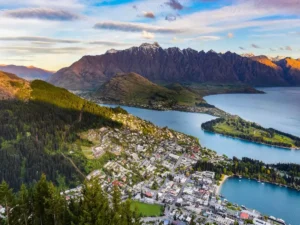
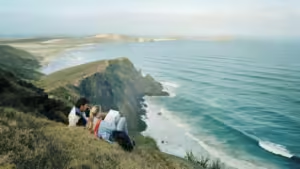
Geography
| Number | Category | Details |
|---|---|---|
| 8. | Capital City | Wellington |
| 9. | Important Cities | Auckland, Christchurch, Hamilton, Dunedin |
| 10. | Land Area | 268,021 square kilometers |
| 11. | Total Area | 268,021 square kilometers |
| 12. | Neighboring Countries (Land) | None |
| 13. | Neighboring Countries (Sea) | Australia, Fiji, Tonga |
| 14. | UNESCO World Heritage Sites | Te Wahipounamu, Tongariro National Park, Subantarctic Islands (3 sites) |
| 15. | UNESCO World Natural Sites | New Zealand Subantarctic Islands |
| 16. | Climate | Subtropical, temperate |
| 17. | Biodiversity | Unique species like kiwi, kakapo, tuatara |
| 18. | Famous River | Waikato River |
| 19. | Famous Mountain | Mount Cook (Aoraki) |
| 20. | Coastline Length | 15,000 kilometers |
| 21. | Major Islands | North Island, South Island, Stewart Island |
| 22. | Longest River | Waikato River |
| 23. | Highest Waterfall | Sutherland Falls |
| 24. | Largest Lake | Lake Taupo |
| 25. | Largest Forest | Fiordland National Park |
Population
| Number | Category | Details |
|---|---|---|
| 26. | Population (2024) | Approximately 5.1 million |
| 27. | Population (1950) | 1.9 million |
| 28. | Population (1900) | 0.9 million |
| 29. | Projected Population (2070) | 6 million |
| 30. | Population Density | 19 people per square kilometer |
| 31. | Urban Population (%) | 86% |
| 32. | Rural Population (%) | 14% |
Demographics
| Number | Category | Details |
|---|---|---|
| 33. | Ethnicity/Race | European (70%), Maori (16.5%), Asian (15.1%), Pacific Peoples (8.1%) |
| 34. | Languages | English (official), Maori (official), New Zealand Sign Language (official) |
| 35. | National Language | English, Maori |
| 36. | Religion | Christianity (37%), No religion (48%), Other (15%) |
| 37. | Median Age | 37.4 years |
| 38. | Life Expectancy | 82.1 years |
| 39. | Birth Rate | 12.4 births per 1,000 people |
| 40. | Death Rate | 7.6 deaths per 1,000 people |
Economic Indicators
| Number | Category | Details |
|---|---|---|
| 41. | Monetary Unit | New Zealand Dollar (NZD) |
| 42. | GDP | $245 billion (2022 est.) |
| 43. | GDP per Capita (PPP) | $51,500 (2022 est.) |
| 44. | Income Level | High income |
| 45. | Consumer Price Inflation | 3.4% (2022 est.) |
| 46. | Current Account Balance | -$7 billion (2022 est.) |
| 47. | Exchange Rate (Per $) | 1 USD = 1.45 NZD |
| 48. | Unemployment Rate | 4.2% (2022 est.) |
| 49. | Stocks Inward ($ billion) | 100 (2022 est.) |
| 50. | Real GDP Growth (%) | 3.2% (2022 est.) |
| 51. | Labor Force (Million) | 2.7 million |
| 52. | Major Industries | Agriculture, forestry, fishing, manufacturing, mining, services |
| 53. | Major Exports | Dairy products, meat, wood, fruit, machinery |
| 54. | Major Imports | Machinery, vehicles, petroleum, electronics, plastics |
| 55. | Public Debt (% of GDP) | 32.1% (2022 est.) |
| 56. | Tax Revenue (% of GDP) | 27.8% (2022 est.) |
| 57. | Minimum Wage | 20.00 NZD per hour |
| 58. | Average Household Income | $72,000 per year |
| 59. | Inflation Rate |
| 3.4% (2022) |
| 60. | Interest Rate | 0.75% (2022) |
| 61. | Major Trade Partners | China, Australia, United States, Japan, South Korea |
Social Indicators
| Number | Category | Details |
|---|---|---|
| 62. | Literacy Rate | 99% |
| 63. | Fertility Rate | 1.8 children per woman |
| 64. | Infant Mortality Rate | 4.1 per 1,000 live births |
| 65. | Under-5 Mortality Rate | 5.2 per 1,000 live births |
| 66. | National Holidays | Waitangi Day, Anzac Day, Christmas, Boxing Day |
| 67. | Health Care System | Universal healthcare system |
| 68. | Health Expenditure (% of GDP) | 9.3% (2022 est.) |
| 69. | Obesity Rate | 30% of adults |
| 70. | Drinking Water Source | 100% of the population has access to clean drinking water |
| 71. | Access to Sanitation | 100% of the population has access to improved sanitation facilities |
| 72. | Average Life Satisfaction | 7.3/10 |
| 73. | Major Health Issues | Cardiovascular diseases, cancer, diabetes |
| 74. | Smoking Rate | 13.4% of adults |
Culture and Society
| Number | Category | Details |
|---|---|---|
| 75. | Famous People | Edmund Hillary, Lorde, Peter Jackson, Russell Crowe |
| 76. | Legal Marriage Age | 18 years |
| 77. | Gender Inequality Index | 0.096 (2021) |
| 78. | National Sport | Rugby |
| 79. | Sport Achievements | Multiple Rugby World Cup wins, Olympic medals |
| 80. | National Animal | Kiwi |
| 81. | National Fruit | Kiwifruit |
| 82. | Famous Landmarks | Milford Sound, Hobbiton, Sky Tower |
| 83. | National Dish | Pavlova |
| 84. | Major Newspapers | The New Zealand Herald, The Dominion Post, Otago Daily Times |
| 85. | Major TV Channels | TVNZ, Three, Prime |
| 86. | Popular Music Genres | Pop, rock, indie, Maori music |
| 87. | National Theatre | The Court Theatre, Christchurch |
| 88. | National Gallery | Auckland Art Gallery |
| 89. | Popular Festivals | Auckland Arts Festival, WOMAD, Pasifika Festival |
| 90. | Average Internet Speed | 100 Mbps |
| 91. | Most Popular TV Show | Shortland Street |
| 92. | Most Popular Book | The Bone People by Keri Hulme |
| 93. | Most Popular Sport | Rugby |
| 94. | Most Visited Museum | Te Papa (Museum of New Zealand) |
| 95. | Largest Stadium | Eden Park |
| 96. | National Anthem | “God Defend New Zealand” |
| 97. | Famous Historical Sites | Waitangi Treaty Grounds, Old St. Paul’s, Kerikeri Mission Station |
| 98. | Major Brands | Air New Zealand, Fonterra, Fisher & Paykel, Whittaker’s |
| 99. | Famous Foods | Hangi, meat pies, fish and chips |
| 100. | Famous Drinks | Flat white, New Zealand wine, L&P |

Education
| Number | Category | Details |
|---|---|---|
| 101. | Best Public University | University of Auckland |
| 102. | Best Private University | University of Otago |
| 103. | Education Rank | 14th globally |
| 104. | School Enrollment Rate | 98% for primary education |
| 105. | Average Class Size | 24 students |
| 106. | Notable Alumni | Jacinda Ardern, Helen Clark, Sam Neill |
| 107. | Public Spending on Education | 5.5% of GDP |
| 108. | Number of Universities | 8 public universities |
| 109. | Popular Study Abroad Destinations | Australia, United Kingdom, United States |
| 110. | Literacy Programs | Extensive adult literacy programs available |
History
New Zealand’s history dates back to the 13th century when Polynesians settled the islands and developed the distinct Maori culture. European exploration began in the 17th century, and British colonization started in the 19th century. New Zealand gained full sovereignty in 1947.
The Flag of New Zealand
The national flag of New Zealand features a blue field with the Union Jack in the upper hoist quarter and four red stars with white borders to the right, representing the constellation of the Southern Cross.
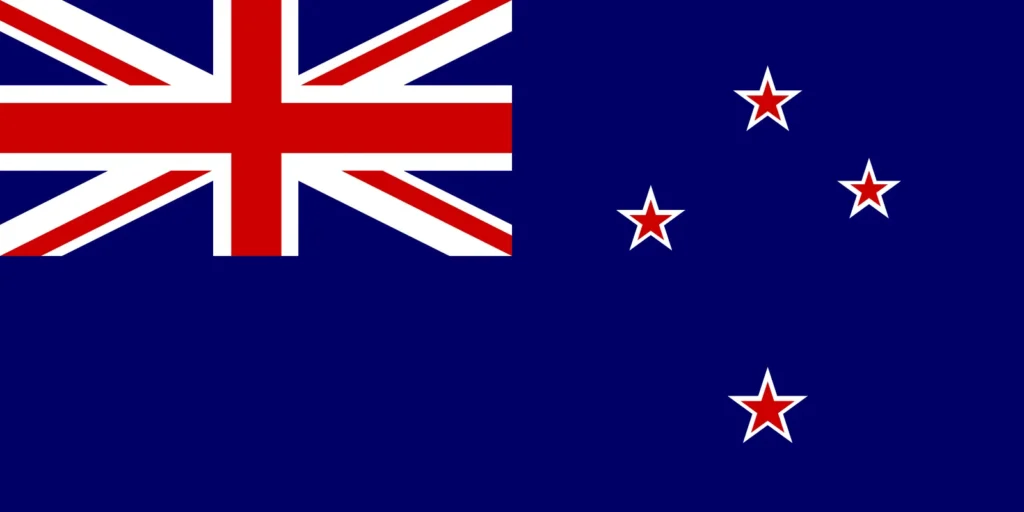
- Union Jack: Represents New Zealand’s historical ties to Britain.
- Southern Cross: Symbolizes New Zealand’s location in the South Pacific Ocean.
The flag symbolizes New Zealand’s heritage and its geographical location in the Southern Hemisphere.

